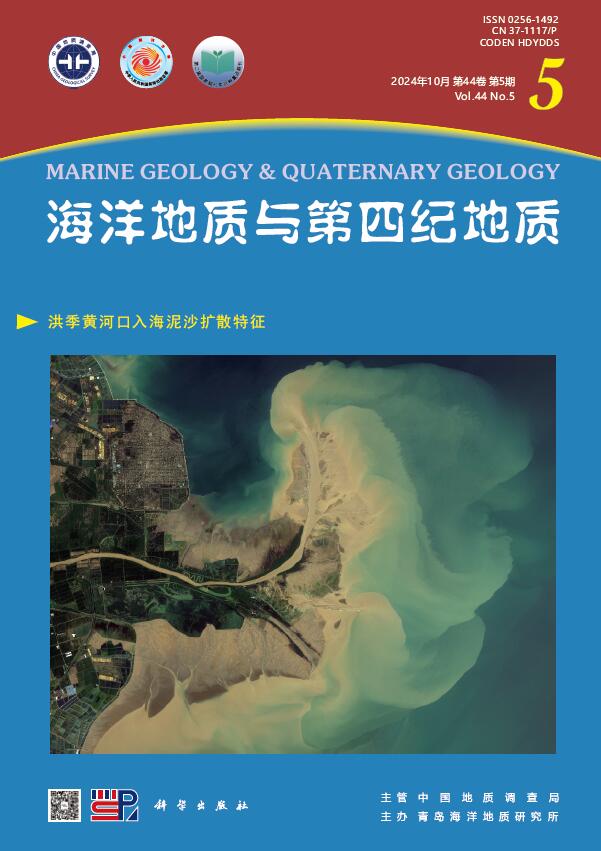Geochemical Responses to PALAEOCLIMATE:EVIDENCE from the Early-Mid Holocene Lake Deposits at Dishaogouwan Section in the Salawusu Catchment of Inner Mongolia
引用次数: 1
Abstract
Sediment grain size,organic carbon content(TOC),carbonate content and stable carbon and oxygen isotopes of carbonates in the Dishaogouwan section on the south edge of the Mu Us desert in Inner Mongolia were sludied in this paper.Age data were used to establish an age model for this section.All the sedimentary and geochemical paleoenvironmental proxies were used to reconstruct the palaeoenvironmental changes since 11 000 aBP,to 4 380 aBP,early to mid Holocene in this area.During the period from 11 000 aBP to 9 950 aBP,the study area was cool and dry.Precipitation in the south north part of Shanxi Loess Plateau and the water from melted Dishaogouwan frozen stratum were the main replenishment water for the Salawusu cathment.During the period of 9 950~9 100 aBP of early Holocene,temperature and precipitation increased with a high effective humidity,and the Dishaogouwan lake came into being.From 9 100 aBP to 5 850 aBP,temperature and precipitation continued to increase but effective humidity was a little lower,while the lake developed to its maximum and lasted for a long time.From 5 850 aBP to 5 100 aBP,temperature and precipitation started decreasing and the lake shrank at the same time.From 5 100 aBP to 4 700 aBP,palaeodune formed in this area under dry climate.There was a short period of temperature and rainfall rising during 4 500~4 380 aBP,and a small lake formed over a carbonate impermeable layer.Desertification has prevailed under the dry condition since 4 380 aBP up to present.地球化学对古气候的响应——来自内蒙古萨拉乌苏流域早-中全新世底邵沟湾剖面湖泊沉积物的证据
对内蒙古毛乌素沙漠南缘地少沟湾剖面沉积物粒度、有机碳含量、碳酸盐含量及碳酸盐稳定碳氧同位素进行了研究。使用年龄数据建立该部分的年龄模型。利用所有的沉积和地球化学古环境指标,重建了该区自11 000 aBP至4 380 aBP、早至中全新世的古环境变化。在11 000 ~ 9 950 aBP期间,研究区为凉爽干燥区。山西黄土高原南北部降水和地邵沟湾冻结层融化水是萨拉乌苏流域补给水的主要来源。早全新世9 950~9 100 aBP期间,气温和降水增加,有效湿度较高,形成了底邵沟湾湖。从9 100 aBP到5 850 aBP,温度和降水持续增加,有效湿度略低,湖泊发展到最大,持续时间较长。从5 850 ~ 5 100 aBP,温度和降水开始减少,湖泊同时缩小。在5 100 ~ 4 700 aBP期间,该地区形成了干燥气候下的古古都带。在4 500~4 380 aBP期间出现了短暂的增温增雨,并在碳酸盐岩不透水层上形成了一个小湖泊。自4380 aBP以来,沙漠化一直在干旱条件下盛行。
本文章由计算机程序翻译,如有差异,请以英文原文为准。
求助全文
约1分钟内获得全文
求助全文
来源期刊
CiteScore
0.10
自引率
0.00%
发文量
4176
期刊介绍:
Marine Geology and Quaternary Geology launched in 1981 is a bimonthly academic journal sponsored by Qingdao Institute of Marine Geology, China Geological Survey, and published by the Science Press, China.The journal aims to publish original, cutting-edge, and explorative scientific results in the field of marine geology and sea-land Quaternary geology. The journal focus on reporting the latest research achievements supported by National Natural Science Foundation Project, National Key Project and International Cooperation Project, with priority to the results in China seas, global ocean and three poles, and the comparative study results between offshore and land, regional and global scientific issues.

 求助内容:
求助内容: 应助结果提醒方式:
应助结果提醒方式:


